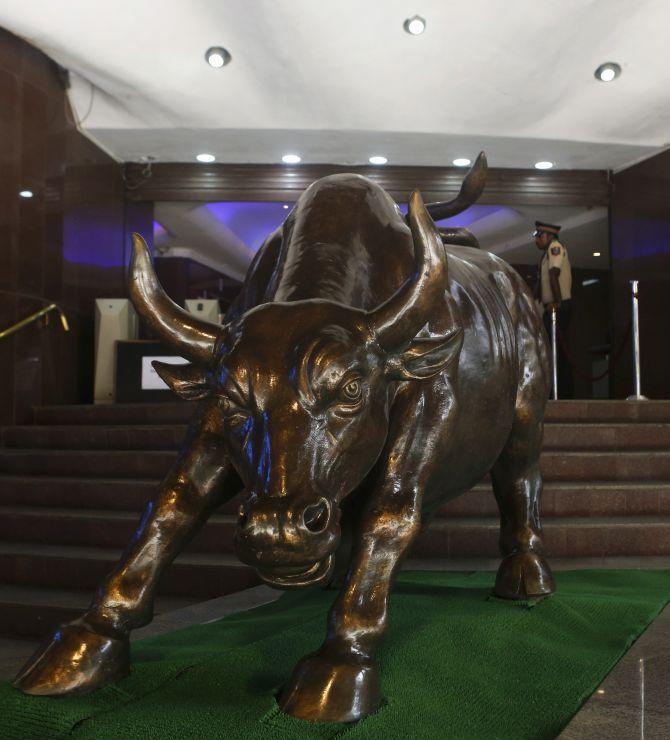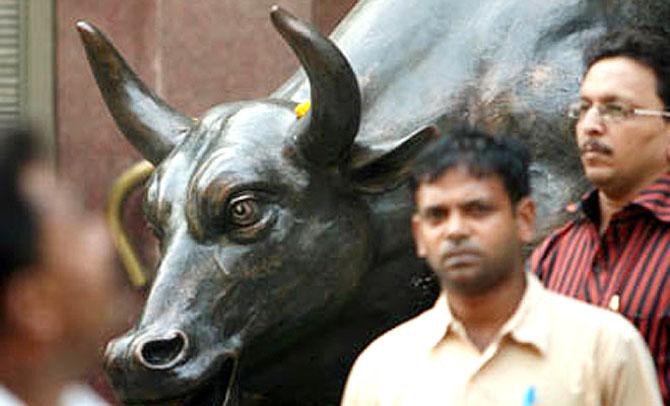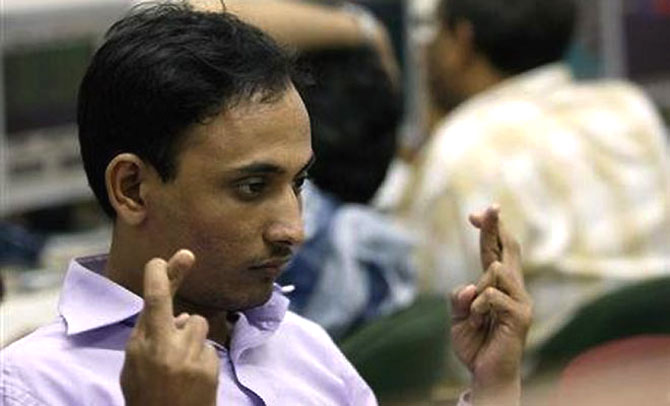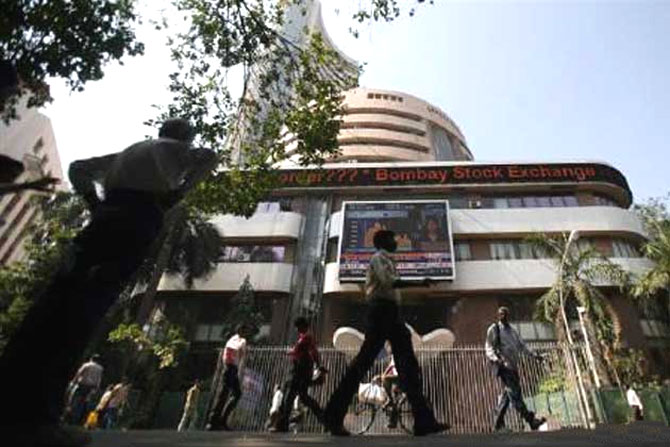Devangshu Datta in New Delhi
Elections can have surprising outcomes, a normal stop-loss could be ‘gapped’ with the trader forced to cover an adverse position at well beyond his preferred levels.
The past few sessions have seen both institutional investors and operators displaying a certain amount of caution. One reason is the ongoing and scheduled assembly elections. Chhattisgarh, Madhya Pradesh, Rajasthan and Delhi are all on the line, and so is Mizoram.
The first four states would be critical for the Bharatiya Janata Party’s (BJP’s) chances in the 2014 general elections and most pundits assume the assembly results will be a strong pointer to Lok Sabha voting patterns.
Rajasthan and Delhi are Congress-ruled, while Chhattisgarh and Madhya Pradesh (MP) are BJP-ruled.
If the BJP does hold Chhattisgarh and MP, and makes gains in Delhi and Rajasthan, the odds on the NDA coming to power at the Centre will shorten.
…
How to trade in stocks during elections
Photographs: Reuters
Given the large number of Modi bhakts in the market, including foreign institutional investors (FIIs) with deep pockets, gains by the BJP will also lead to a rally on the bourses.
On the other hand, if the BJP doesn’t make gains or it actually loses ground, we could see a sharp correction.
Until the results are declared on December 8, we are, therefore, likely to see volatility linked to rumours ranging around the elections. This will be an useful test run for traders preparing for the general elections, since we will see an amplified version of the same thing happening in 2014.
Playing a major political event can be nerve-racking. An election falls into the realm of known unknowns. You know that there will be an important event on December 8; however, you have little idea of the outcome.
…
How to trade in stocks during elections
Photographs: Reuters
You have a broad idea of the directional impact of possible outcomes. But you have little idea of the amplitude of impact.
Neglecting Mizoram, there are multiple possible scorelines, ranging from 4-0 for the Congress to 4-0 for the BJP and different permutations of 3-1, 1-3, 2-2, and so on. Each of those scores will have some sort of impact on the market.
There are multiple strategies available. Should you strangle the index, buying both calls and puts, and hope to make some money whatever the outcome?
If you do strangle, what sort of volatility range should you bet on? Should you go all-in, backing the BJP with long futures and/or long calls? Should you take the contrarian view and short the index futures and/or take long puts?
Here are some thoughts. I think there will be some speculative gains before the results because the opinion polls seem to suggest the BJP is favoured. The bulls will bet on that. Hence, this week could be bullish.
…
How to trade in stocks during elections
Photographs: Reuters
I would, therefore, be inclined to be long in the perspective of the next four to five sessions. However, if there are sudden news-based shifts in opinion, there could also be a sharp sell off at some stage before the results. There may be at least one corrective session. Contrarians could wait for that.
Daily high-low ranges are likely to increase in amplitude and opening gaps are likely. Anybody who is in the market should be using wide stop-losses to accommodate large swings. Or, any such trader should be operating with long calls or long puts since options have limited downsides.
December 9 could be a very big session either way. If you are carrying positions going into that session, be prepared for a big gap on the opening.
…
How to trade in stocks during elections
Photographs: Uttam Ghosh/Rediff
While I do think the BJP will do well, I also suspect that the expectations are too high. You may have a scoreline of 3-1 in favour of the BJP and see the market falling anyhow.
As to strangles, at this early stage of a settlement, I would be prepared to take strangles with call and put strikes set at roughly five per cent away from money. It's quite likely that the market will move that much by December 10.
Whatever your personal risk-profile, double your loss expectations. Elections can have surprising outcomes and a normal stop loss could be “gapped” with the trader forced to cover an adverse position at well beyond his preferred levels.







article